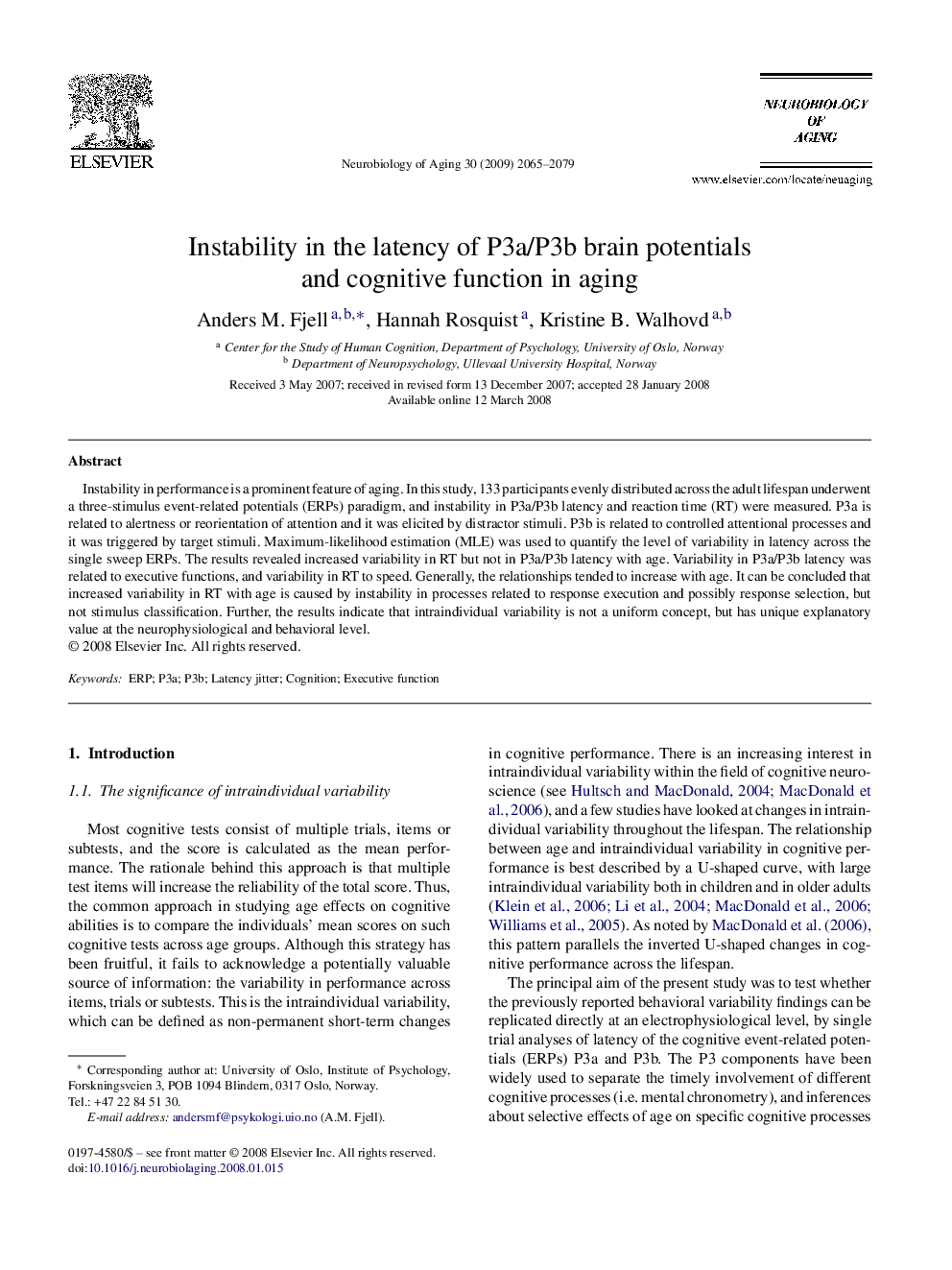| Article ID | Journal | Published Year | Pages | File Type |
|---|---|---|---|---|
| 328710 | Neurobiology of Aging | 2009 | 15 Pages |
Instability in performance is a prominent feature of aging. In this study, 133 participants evenly distributed across the adult lifespan underwent a three-stimulus event-related potentials (ERPs) paradigm, and instability in P3a/P3b latency and reaction time (RT) were measured. P3a is related to alertness or reorientation of attention and it was elicited by distractor stimuli. P3b is related to controlled attentional processes and it was triggered by target stimuli. Maximum-likelihood estimation (MLE) was used to quantify the level of variability in latency across the single sweep ERPs. The results revealed increased variability in RT but not in P3a/P3b latency with age. Variability in P3a/P3b latency was related to executive functions, and variability in RT to speed. Generally, the relationships tended to increase with age. It can be concluded that increased variability in RT with age is caused by instability in processes related to response execution and possibly response selection, but not stimulus classification. Further, the results indicate that intraindividual variability is not a uniform concept, but has unique explanatory value at the neurophysiological and behavioral level.
